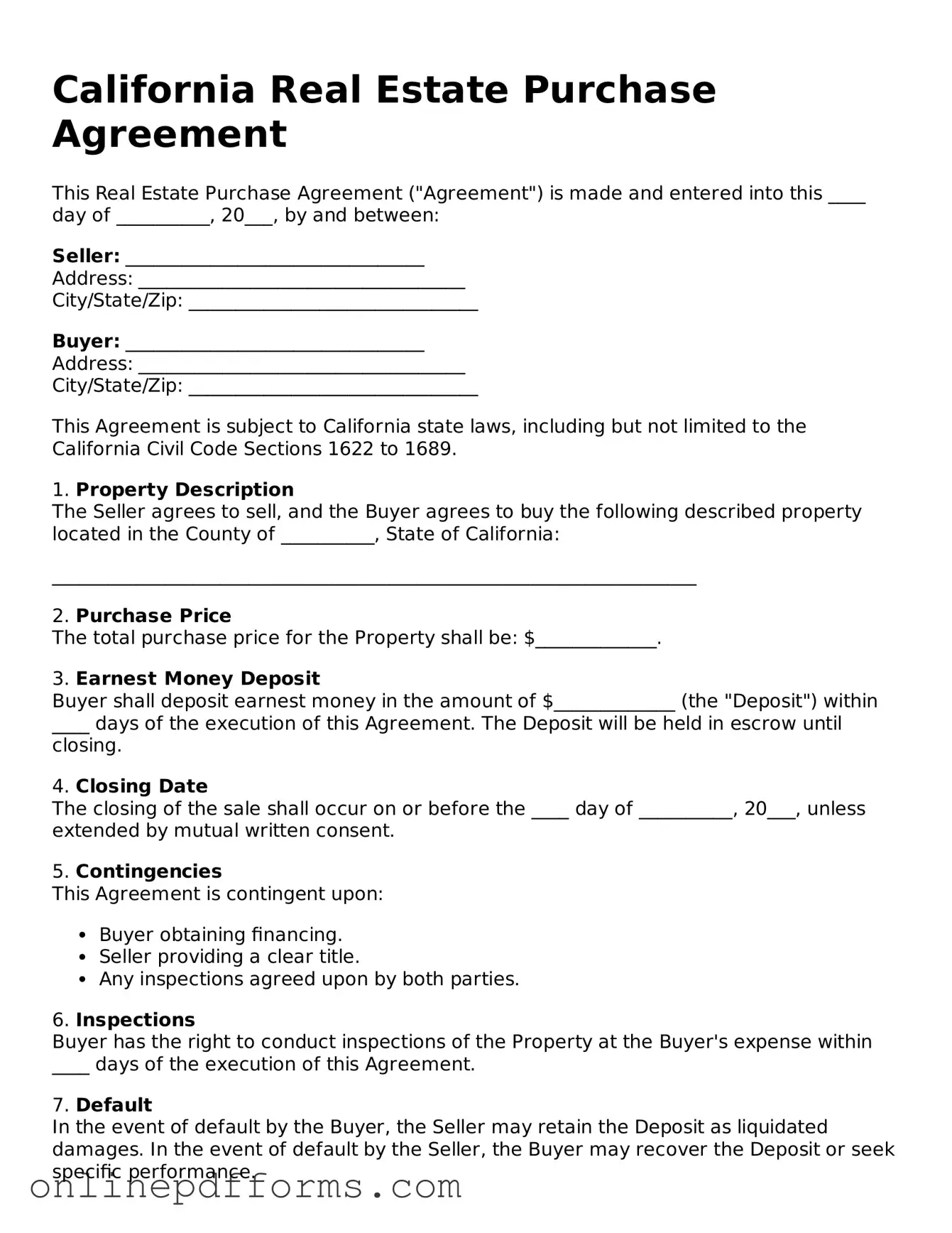The California Real Estate Purchase Agreement (REPA) shares similarities with the Residential Purchase Agreement. Both documents outline the terms and conditions under which a buyer agrees to purchase a residential property. They include essential details such as the purchase price, financing terms, and contingencies. Additionally, both agreements require the signatures of the buyer and seller, making them legally binding once executed. The Residential Purchase Agreement is specifically tailored for residential properties, ensuring that all pertinent information is included for such transactions.
Another document that resembles the REPA is the Commercial Purchase Agreement. This agreement is used for the sale of commercial properties and contains many of the same elements as the REPA, such as purchase price, terms of sale, and contingencies. However, the Commercial Purchase Agreement also addresses specific aspects relevant to commercial transactions, like zoning regulations and tenant leases. Both agreements serve to protect the interests of both parties involved in the sale.
The Lease Agreement is another document that shares similarities with the REPA. While the REPA is focused on the sale of property, the Lease Agreement outlines the terms under which a property is rented. Both documents specify critical terms, including duration, payment amounts, and responsibilities of the parties. They ensure that both landlords and tenants understand their rights and obligations, creating a clear framework for the property arrangement.
The Option to Purchase Agreement is closely related to the REPA as well. This document grants a potential buyer the right to purchase a property at a specified price within a certain timeframe. Like the REPA, it includes terms regarding price and conditions for exercising the option. Both agreements protect the interests of the parties and provide a structured approach to property transactions, albeit with different end goals.
The Seller's Disclosure Statement is another document that complements the REPA. It provides crucial information about the property’s condition and any known defects. While the REPA outlines the transaction terms, the Seller's Disclosure Statement ensures that buyers are fully informed about what they are purchasing. This transparency helps prevent disputes and fosters trust between the buyer and seller.
In navigating various real estate agreements, it's important for prospective buyers and sellers to be informed about all necessary documentation, including foundational forms such as the California Identification Card. This can be particularly essential for verifying identity during transactions. For thorough guidance on obtaining or renewing this ID, you can visit https://californiapdf.com for detailed instructions and resources.
Finally, the Escrow Agreement is similar to the REPA in that it involves the handling of funds and documents during a real estate transaction. This document outlines the responsibilities of the escrow agent, who holds funds and documents until all conditions of the sale are met. Both the Escrow Agreement and the REPA work together to facilitate a smooth transaction, ensuring that all parties fulfill their obligations before the transfer of property ownership occurs.
